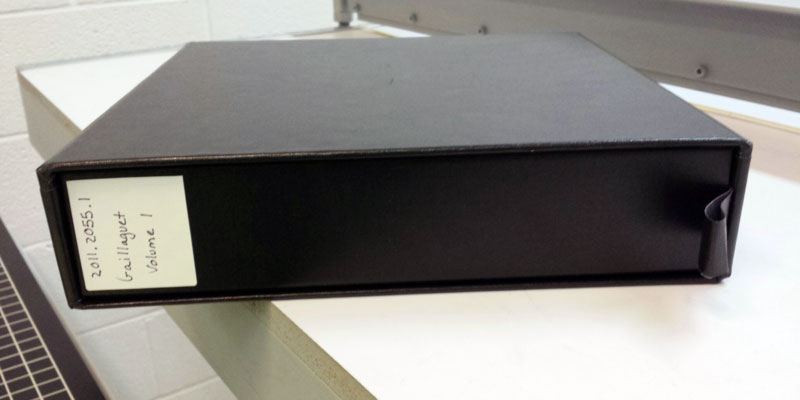Adventures in Preservation at the National Postal Museum
By Anna Reiter, Intern, Preservation Department
My internship at the National Postal Museum has been seriously amazing! I was the intern for the Preservation Department under the direction of Linda Edquist (Head of Preservation), Rebecca Kennedy (Preservation Specialist), and Manda Kowalczyk (Preservation Specialist). Over the course of my time I learned about preservation standards, such as monitoring environmental and light level readings; creating four-flap enclosures, sink mats, and humidification chambers; preparing objects for exhibition by backing and wrapping or encapsulation; and engaging visitors about the 10 Agents of Deterioration. In particular, my internship focused on rehousing a series of glass negatives from various collections and the Raymond Gaillaguet Collection, which also required cataloguing.
Preservation Specialists rehouse collections for many different reasons, but mainly to stabilize and prevent deterioration. It was for these reasons that I rehoused the glass negatives and the Gaillaguet Collection. To rehouse the glass negatives, I created custom four-flap enclosures out of un-buffered card stock. First, I measured the card stock to be approximately three times larger than the negative and then cut out the corners to leave four flaps (hence the name).

Next, I used a bone folder to put two creases in the card stock and folded each flap at the crease. Following this, I created a locking mechanism (similar to those on cereal boxes) to hold the four-flap enclosure in place around the glass negative and noted a short description of the object on the front of the four-flap enclosure.
Then, using white, cotton gloves, I placed the glass negative inside of its four-flap enclosure and placed it in an archival box with dividers to keep them from taking on too much weight and causing damage. I repeated this process with each glass negative in the collection.

For the Raymond Gaillaguet Collection, I learned how the rehousing process works from beginning to end. This collection consisted of four stamp albums holding various philatelic objects and came to the museum in cloudy page protectors inside overfilled three-ring albums. To start, I analyzed all four albums and crafted a rehousing proposal (a document that explained the original condition of the albums and the proposed method of rehousing to be completed.) The rehousing proposal was approved by Linda and Rebecca and I began work on the next phase of the rehousing process. First, I corner mounted any loose objects to album pages, added the accession number to the bottom left corner of the back side of the page, and incorporated them into the album by order of donor intent. Then, I replaced all of the old page protectors with acid-free, polypropylene sleeves. Next, I replaced the original three-ring albums with acid-free albums, placed them in protective slipcases, and labeled each one with the name of the collection, the volume number, and the accession number.
Lastly, I entered data regarding each object within the albums into the museum’s collections database, The Museum System (TMS). Over the last remaining days of my internship I will write a report detailing all of the steps I took to rehouse the collection. This report will be added to the Gaillaguet records in TMS and will represent the last step in the rehousing process.
As my time comes to a close in the Preservation Department at the National Postal Museum, I reflect on all of the things I have learned from Linda, Rebecca, and Manda. Since beginning this adventure in preservation, I realized my true passion for working with museum collections and decided that I want my career to be in a museum’s collections department. Without the help of Linda, Rebecca, Manda, and all of the great staff at the National Postal Museum, I may not have realized this passion. As I take the next steps in my career, I take with me invaluable knowledge of preservation standards and collections management that will prepare me for whatever comes my way in the future.




